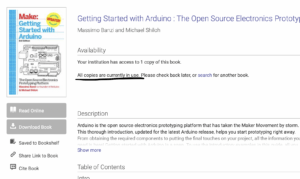In this week’s recitation, I first built a circuit which has a led light that fades in time, and then a circuit with a melody tone. These two circuits weren’t hard to build and I finished building them successfully in time. I especially loved the melody one because the it was really cute.
Then I grouped up with Vicky and Isa to build the third circuit, which was finally made into a two-player game where each participant races to click a button more quickly than their opponent. For this circuit, it was provided as a layout diagram instead of a schematic, which helped me a lot during the building processs. Drawing my own schematic of how the components were connected was hard as I didn’t clearly understand how each point connects with another, but it definitely helps me have a deeper understanding of what I have learnt during the week, the confusion also encourages me to learn more about the circuit. It took me and my partners some efforts to build this circuit but luckily it worked well, we ran the program, raced with each other and had fun. We also made matching resistor rings just for fun hehe.
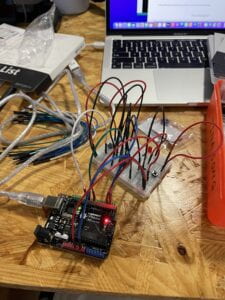
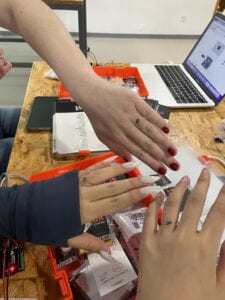
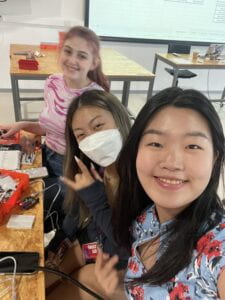
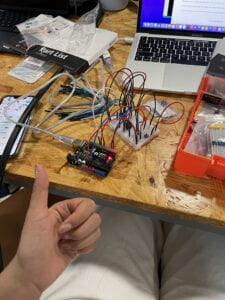
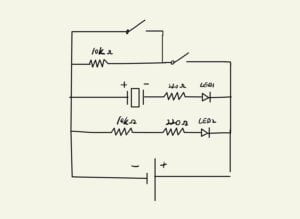
This drawing of the schematic of circuit 3 is definitely not the right version, but that’s all I can do now. After more learning and practicing, I will eventually be able to draw the correct version myself.
Question 1:
I could use a button with force sensor in it, which can measure the pressure I put on each button, and make a circuit and program that can adjust the tone according to the pressure put on the button. Then the participants can control their strength and adjust how much stress they put on the button so as to adjust the tone. The participants can play a melody together and that’ll be fun. This definitely makes this game more interactive.
It’s an important notion because all interaction is made up of events or physical phenomena that must be sensed, interpreted, and responded to. (Physical Computing, page 213) Participants sensed (heard), interpreted (thought about), and responded (pressed the button) to the melody. And that is a whole process of interaction, which means that this creative button makes this game more interactive.
Question 2:
The resistor helps limit the current that passes through the push button and make sure it doesn’t exceed the current rating allowed for the push button.
Question 3:
The book is currently unavailable, I will read it when it’s available and update my blog.
